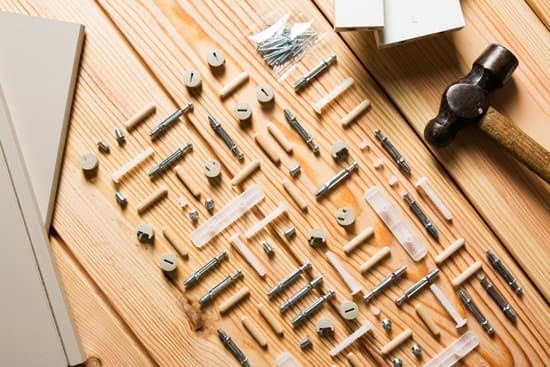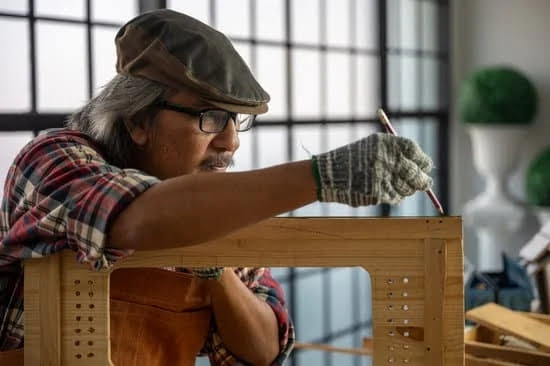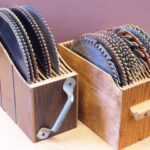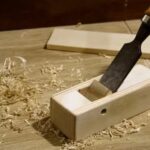Introduction
3D CNC routers for woodworking have become increasingly popular in the past decade. These machines offer a new level of productivity and accuracy for creating complex 3D shapes out of wood, plastic, and other materials. Historically, 3D CNC routers were extremely expensive and only large manufacturing companies could afford them. More recently however with new technological advancements, they are becoming within reach of smaller manufacturers and wood workers, allowing many small businesses to add production capabilities they would not otherwise be able to compete with larger companies.
A 3D CNC router is essentially a computer-controlled cutting system that utilizes three motors that work together to form precise cutting paths for a variety of materials including hardwood, soft woods, plastics and composites. It does all this using a combination of software and hardware, providing incredible control over the cutting path which is beyond what you could do with a mechanical router or circular saw alone. With its superior cutting control it can achieve levels of accuracy available only to large scale industrial processes before this technology was introduced. This means that complex curved cuts can be made quickly while maintaining exacting tolerances throughout the project. These machines also allow detailed decorative carvings that would not be possible with traditional cutters or even advanced hand tools pencils carving knives. For example intricate details such as filigree designs which normally take hours can be produced in just minutes when working with a 3D CNC router.
Benefits of Using a 3D CNC Router for Woodworking
A 3D CNC router for woodworking offers many advantages over traditional manual methods. Firstly, you can create detailed shapes and designs that would be impossible with traditional tools. This type of automation allows for the creation of intricate components without having to manually carve them out. It also eliminates human time constraints, allowing projects to move quickly from concept to finished product with minimal effort. Additionally, CNC routing is much more precise than manual routing and is capable of creating complex geometries that manual tools cannot achieve. Furthermore, due to the computer-controlled nature of 3D CNC routers, they are capable of producing parts beyond the capabilities of most conventional tools. Finally, using a 3D CNC router has proven to be cost-effective as it offers high repeatability and consistent results which translates into longer life spans and lower production costs for large production runs or multiple small batch orders.
Different Types of CNC Router Machines and Their Uses
There is a wide variety of 3D CNC router machines available for woodworking. The type of CNC router machine used will depend on the size, speed, accuracy and level of automatic controls desired by the user. There are many options for CNC machines including table top models, gantry style routers, ATC machines and industrial 4 or 5-axis larger format machines.
Table-top 3D CNC Routers are designed to fit in small shops and have limited capabilities but are still impactful. These are often used by hobbyists and small businesses who need to produce pieces up to two feet squared. Gantry Style Router is much more durable which allows it to generally handle bigger cutting jobs than a basic Table-Top model. These can be used for moderate accuracy production runs with cut depths up to 4″ deep with speeds approaching 1″ per second in certain applications. Automatic Tool Changer (ATC) Machines allow the woodworker to switch tools quickly without having to unclamp and re-clamp material manually between operations, this prevents downtime while processing materials concurrently making it great for those who need large repeatable production runs from their equipment. Industrial 4 or 5-axis larger format CNC routers are designed for maximum operation capability though expert-level knowledge is necessary when manufacturing projects with these systems. With extreme oversight most industrial CNC Routers are capable of executing complex movements during machining processes enabling production with minimal idle time which increases efficiency.
Step-by-Step Guide to Woodworking with a 3D CNC Router
1. Prepare the raw material: A 3D CNC router needs to be supplied with a well-prepared piece of wood or other materials that is ready for cutting. In order to achieve accurate cutting results, it is important that the piece of wood or other materials is straight and free from defects. If necessary, items can be sanded and levelled to create a flat surface for accurate work.
2. Set up the CNC router: Once the workpiece has been prepared, the CNC router needs to be set up properly in order to ensure best results. This includes setting the correct spindle speed, feed rate and tool type depending on which material is being cut. It is also important to load any relevant CAD files into the machine software so that it knows what actions need to take place during operation.
3. Apply cutting lubricant: When working with harder materials like aluminum or steel, it’s advisable to apply an appropriate cutting lubricant in order to reduce friction between the bit and material while cutting. This will prevent heat build-up during machining and keep wear-and-tear at bay over longer usage cycles.
4. Create designs: Now it’s time for programming the CNC machine itself! Users are able to create custom design patterns either directly through their computer input systems or by importing files from other CAM (Computer Aided Manufacturing) software packages such as Fusion 360 or AutoCAD. Depending on each individual project specifications, intricate shapes, forms and profiles can be created in minutes instead of hours spent manually marking out patterns on manual routers!
5. Make adjustments as needed: As any master craftsman knows; perfection does not come all at once! The ability to make small changes on-the fly without major stops in production time makes CNC machines incredibly valuable tools for anyone in the woodworking industry – greatly reducing trial-and-error waiting periods by allowing users adjust details with just few mouse clicks here and there until they get their desired result!
6 Run programs & monitor quality: Last but not least, after all setup processes have been complete and production parameters have been established; manufacturing process can finally begin! During this phase it is important for operators to keep an eye out for potential imperfections and inconsistencies on finished parts by running multiple checks throughout each cycle -in many cases CNCs are even equipped with advanced automated detection systems that let users know when something has gone wrong or indicate problems prior completion of certain tasks -ensuring pieces meet highest standards expected from customers everytime!
Common Materials Suitable for 3D CNC Router Woodworking
3D CNC routers are powerful tools that can cut a variety of materials. Wood is the most popular material used in 3d CNC Router woodworking, as it is relatively inexpensive, easy to shape and produces consistent results. Hardwoods such as oak, maple and cherry are favourites amongst hobbyists and professionals alike, as they can easily be machined to create one-of-a-kind pieces of furniture or decorative art. Softwoods such as pine and spruce are also suitable for CNC Router woodworking although they require more delicate care due to their fragile nature. Other common materials used in 3d CNC Router woodworking include plywood, MDF, veneer and laminate. These types of materials have varying degrees of durability and often require specialized cutting tools for best results. Working with these materials often involves additional preparation steps such as pre-finishing or sanding before cutting to avoid any damage when making intricate shapes.
Necessary Tools and Accessories for 3D CNC Router Woodworking
3D CNC Routers for woodworking require several specialist tools and accessories for optimal use. These tools range from cutting tools to workholding tools, which include clamps and vises. Cutting tools are the most important tool of a 3D CNC Router, and they come in various shapes and sizes, depending on the project at hand. The required shank size can vary depending on the application, but typically routers designed for woodworking operate best with an 1/8-inch or ¼-inch shank size.
In addition to the cutting tools, other necessary tools for woodworking with a 3D CNC Router include collets and nut sets that hold the cutting tool securely for better accuracy and minimal vibration during operation. High speed spindles are commonly used in larger machines as they are specially made to dissipate heat more effectively for longer periods of use. For smaller operations, stepper or servo motors with bevel gears may be used instead. A good vacuum system is also essential when deciding which type of router to choose, as this will remove waste particles from the material during operation.
Finally, it is important to invest in quality fixtures and jigs such as clamps and vises that secure materials on the machine’s surface plate while they are being cut. Workholding devices like T-tracks allow different heights of materials to be machined by providing customizable set up options that provide a reliable base for accurate results every time. With all of these pieces of specialty equipment combined together in one setup, any professional looking designs can be easily created using a CNC Router.
Troubleshooting Techniques for 3D CNC Router Woodworking Mishaps
Woodworking with 3D CNC routers is an interesting and complex craft that can yield amazing results when done correctly. However, there may be times where the machine or project yields a less than optimal result. Troubleshooting potential issues with your 3D CNC router involves first understanding the mechanics of the machine and then methodically diagnosing what could potentially have gone wrong.
If the CNC router isn’t cutting correctly, it’s usually due to inadequate holding of the workpiece, or insufficient clamping force being applied as the workpiece is being cut. You may need to opt for heavier clamps or custom fixtures designed specifically for the job you are doing to increase stability and reliability. The cutting bit itself can also affect cuts; if these bits become worn out, they may produce poor quality cuts. It is important that these bits are kept sharp so that they produce clean consistent cuts. Additionally, double-check the positioning of your tool path origin relative to your design layout on your material prior to cutting; if not accurately positioned prior to a cut being made you will end up with incorrect reaction results in other parts of your project. Lastly, review both your feed rate and spindle speed settings against material type — as feed rates and speeds which are too high or too low can endanger both projects and tools themselves when incorrectly adjusted.
Examples of Creative and Unique Projects Utilizing a 3D CNC Router
1. Carving reliefs and sculptures in wood or antler: A 3D CNC Router could be used to carve intricate designs and shapes into wooden or antler pieces, producing striking reliefs and captivating sculptures.
2. Wooden jewelry production: Jewelry makers can use a 3d CNC router to quickly craft custom complex pieces with perfect accuracy.
3. Custom parts fabrication: Whether it’s building engines or creating unique parts for furniture, electronics, musical instruments, sporting goods, and more, the precise capabilities of a 3D CNC router make it possible to produce very precise parts.
4. Custom signage creations: With the ability to not only cut out shapes but also engrave text, logos and images a 3D CNC router is ideal for fabricating customized signs quickly and easily.
5. Complex joinery projects: If you need complex joints for your project such as box joints, dovetail joints or miter joints, a 3D CNC router is extremely helpful in achieving precision-cut wooden pieces that fit perfectly together every time.
6. Automated furniture construction: Instead of having to manually assemble each piece of furniture you’re able to use a 3D CNC Router to quickly construct the frames by cutting and engraving detailed patterns into wood pieces at high speeds with extreme accuracy.
Considerations for Choosing the Right 3D CNC Router for Woodworking
When it comes to woodworking, a 3D CNC router can be incredibly useful for creating intricate designs and shapes quickly and easily. The main advantages of 3D CNC routers for woodwork compared to traditional routers are their ability to create any shape or design and their consistent level of accuracy in repeatability and executing tasks with high precision. When selecting the right 3D CNC router for your woodworking projects, there are some key considerations that should be taken into account.
First of all, it is important to assess your needs; what types of materials you need to work with, what features and capabilities the machine must have, how big a working area you will be using, how heavy is the material you plan on cutting with, do you need extra safety features etc? All these factors will help you determine what type of 3D CNC router will best meet your needs. Another important factor is cost. Quality machines come at a hefty price but may be necessary based on your project requirements.
Next, look at the software being used by the machine. Is it compatible with various CAD/CAM software programs? Does it provide an intuitive user interface as well as an efficient workflow? One should also consider technical support from the manufacturer: from installation to maintenance & troubleshooting services provided? Finally, look for machines that offer a variety of tool heads which allow users to quickly switch between routing operations.
Conclusion
3D CNC routers have revolutionized the world of woodworking with their ability to quickly and easily manufacture intricate parts for projects large and small. While these machines can be expensive, they are a tool of unmatched precision, consistent output, and heavy power compared to other types of router systems. By understanding the capabilities of 3D CNC routers as well as the potential challenges that may arise when using this technology, users can achieve successful results with their woodworking projects. It is important to understand what type of materials are best suited for a 3D CNC router and how those materials will best work with the machine’s setup and tolerances so that parts come out right every time. Additionally, the cutting speeds should be appropriate for each type of material or job being done so that time isn’t wasted and there aren’t accidents due to debris buildup or excessive wear down on the machine parts. It’s also important to keep an eye on things like coolant levels, maintenance tasks, bit sharpening, tool life tracking; all factors which can affect machine performance in a big way if not managed appropriately. By taking care with pre-programming as well as double-checking code when it’s completed, users will be able to reduce cutting errors before they’re even encountered. Finally, having a correct feed rate set will ensure accuracy while allowing users to maximize productivity by safely running at higher speeds without compromising accuracy or safety. With just a few simple steps, 3D CNC routers make cnc woodworking easier than ever before.

Hi everyone! I’m a woodworker and blogger, and this is my woodworking blog. In my blog, I share tips and tricks for woodworkers of all skill levels, as well as project ideas that you can try yourself.





